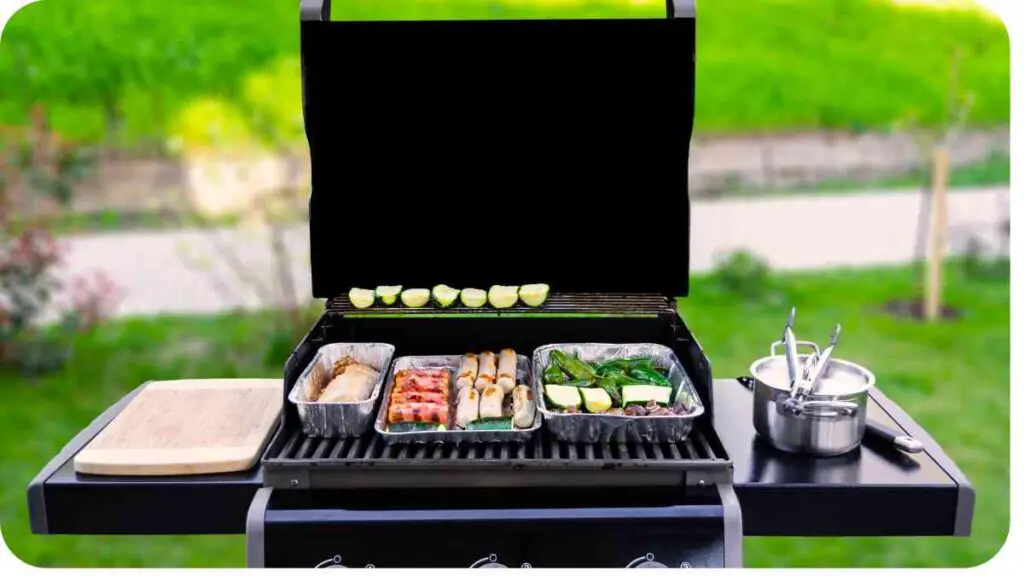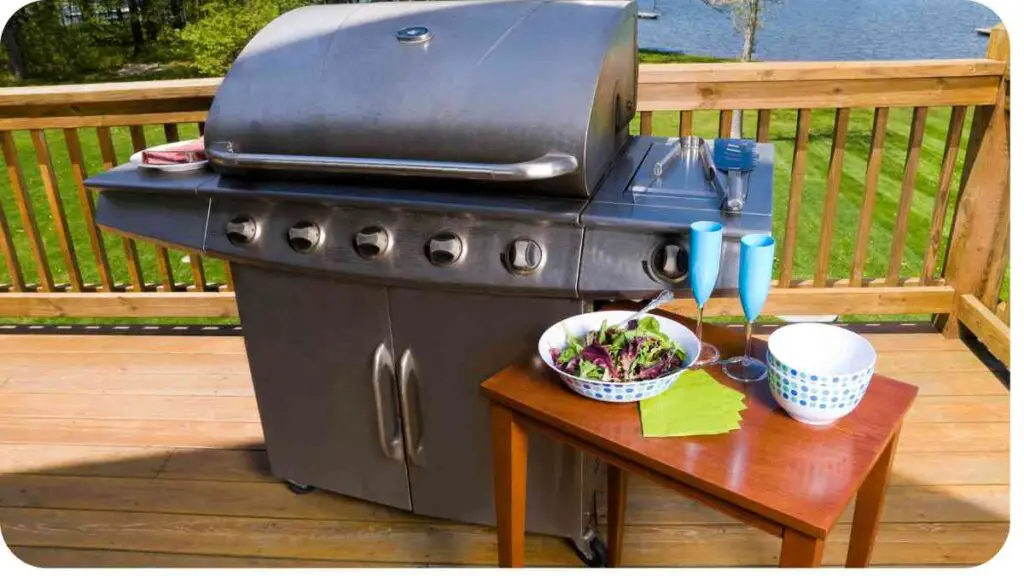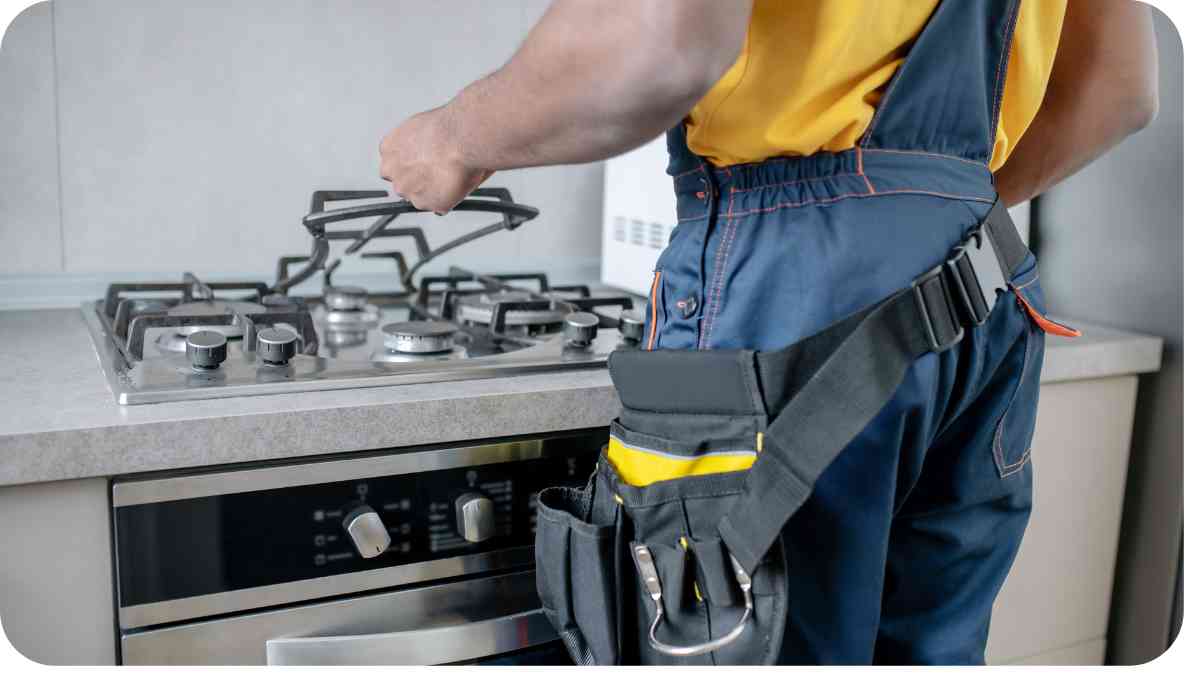Grilling is a beloved pastime for many, but it can quickly turn frustrating when your gas grill won’t ignite. Whether you’re gearing up for a backyard barbecue or simply craving some grilled delights, dealing with ignition issues can put a damper on your plans.
In this guide, we’ll delve into the common problems that plague gas grill ignition systems and provide step-by-step troubleshooting tips to get your grill fired up again.
| Key Takeaways |
|---|
| 1. Gas grill ignition issues can be frustrating, but with the right troubleshooting steps, they can often be resolved effectively. |
| 2. Start by checking the gas supply, inspecting ignition system components, and cleaning the ignition electrodes to address common problems. |
| 3. Adjusting the ignition spark and verifying the propane regulator are essential steps to ensure reliable grill operation. |
| 4. Proper ventilation is crucial for safe and efficient grilling, so ensure that the grill is positioned in an open, well-ventilated area. |
| 5. If troubleshooting steps fail to resolve ignition issues, consider seeking professional assistance or replacing faulty components for optimal performance. |
2. Understanding Gas Grill Ignition Systems

Gas grills typically utilize one of several ignition systems to spark the flame. Understanding the type of ignition system your grill employs can help diagnose and resolve ignition issues more effectively.
When troubleshooting gas grill ignition, it’s crucial to be thorough. Just like diagnosing irrigation system problems, attention to detail ensures a successful fix.
Table: Types of Gas Grill Ignition Systems
| Ignition System | Description |
|---|---|
| Piezo Ignition | Utilizes a piezoelectric igniter to generate a spark when the ignition button is pressed. Requires no external power source, making it simple and reliable. |
| Electronic Ignition | Relies on battery-powered electronic components to produce a spark. Commonly found in modern gas grills for their convenience and ease of use. |
| Hot Surface Ignition | Employs a hot surface igniter, similar to those used in furnaces, to ignite the gas. Provides consistent ignition even in windy conditions or at high altitudes. |
3. Common Gas Grill Ignition Problems
Gas grill ignition systems can encounter various issues over time, leading to frustration and inconvenience for grill enthusiasts. Here are some of the most common problems you might encounter:
Table: Common Gas Grill Ignition Problems
| Problem | Description |
|---|---|
| No Spark or Ignition | The grill fails to produce a spark or ignite the gas, indicating a potential issue with the ignition system. |
| Weak Spark | A spark is generated, but it is weak or inconsistent, resulting in difficulty in lighting the grill. |
| Clicking Sound Without Ignition | The ignition button produces a clicking sound, but the grill does not ignite, suggesting a malfunction in the system. |
| Gas Smell Without Ignition | Gas odor is detected, but the grill does not ignite, indicating a potential gas flow or ignition problem. |
| Partial Ignition | Only some burners or sections of the grill ignite, leading to uneven heating and cooking. |
4. Troubleshooting Steps

When faced with gas grill ignition issues, it’s essential to follow a systematic approach to identify and resolve the underlying problems. Here are step-by-step troubleshooting steps to help you get your grill back in action:
Maintaining a pristine lawn goes beyond fixing grill ignition issues. Explore solutions for uneven grass to elevate your outdoor space.
- Check the Gas Supply: Ensure that the gas tank is not empty and that the valve is fully open to allow gas flow to the burners.
- Table: Gas Supply Checklist
| Checkpoint | Action Needed |
|---|---|
| Gas Tank Level | Check gas level and replace if empty or low. |
| Valve Position | Ensure the valve on the gas tank is fully open. |
| Gas Hose | Inspect for kinks, leaks, or damage. |
It’s crucial to verify that there are no obstructions or leaks in the gas supply line that could impede the flow of gas to the burners.- Inspect the Ignition System Components: Examine the ignition system components, including the igniter, electrodes, and wiring, for any signs of damage or wear.
- Table: Ignition System Inspection Checklist
Pests can invade any outdoor space, including around your grill. Arm yourself with effective strategies for dealing with pests to protect your cooking area.
| Component | Inspection Action |
|---|---|
| Ignition Button | Press the button and listen for clicking sounds. |
| Ignition Electrodes | Check for corrosion, dirt, or misalignment. |
| Wiring | Look for loose or damaged wires. |
Ensure that all connections are secure and that the electrodes are properly positioned near the burner ports for optimal ignition.- Clean the Ignition Electrodes: Over time, ignition electrodes can become dirty or coated with residue, hindering their ability to produce a spark.
- Table: Cleaning the Ignition Electrodes
| Cleaning Method | Description |
|---|---|
| Wire Brush | Gently scrub the electrodes with a wire brush to remove dirt, grease, or carbon buildup. |
| Sandpaper | Use fine-grit sandpaper to lightly sand the electrodes and remove stubborn residue. |
| Cleaning Solution | Apply a specialized cleaning solution to dissolve grease and grime from the electrodes. |
Cleaning the electrodes regularly can improve ignition performance and extend the lifespan of the ignition system.- Adjust the Ignition Spark: If the spark produced by the igniter is weak or inconsistent, it may be necessary to adjust the ignition spark to ensure proper ignition.
- Table: Adjusting the Ignition Spark
Outdoor living spaces often suffer wear and tear. Learn how to restore your patio by repairing cracks for a seamless surface.
| Adjustment Method | Description |
|---|---|
| Electrode Position | Align the electrodes with the burner ports and adjust their distance to optimize spark ignition. |
| Ignition Button | Press the ignition button while observing the spark to determine if adjustments are needed. |
| Ignition Module | Adjust the settings on the ignition module, if applicable, to increase the spark intensity. |
Fine-tuning the ignition spark can enhance ignition reliability and performance, especially in challenging conditions.- Test the Ignition Switch: Verify that the ignition switch is functioning correctly by testing its operation and continuity.
- Table: Testing the Ignition Switch
| Test Procedure | Description |
|---|---|
| Multimeter Test | Use a multimeter to measure the continuity of the ignition switch and ensure proper functionality. |
| Button Response | Press the ignition button and observe if it engages smoothly and consistently. |
| Wiring Inspection | Inspect the wiring connections to the ignition switch for any signs of damage or corrosion. |
A faulty ignition switch can prevent the ignition system from receiving the necessary signal to ignite the gas.- Verify the Propane Regulator: Check the propane regulator to ensure it is functioning correctly and delivering the proper gas pressure to the burners.
- Table: Propane Regulator Verification
| Verification Steps | Description |
|---|---|
| Pressure Test | Use a pressure gauge to measure the output pressure of the propane regulator and compare it to the specified range. |
| Regulator Adjustment | Adjust the regulator settings, if necessary, to achieve the correct gas pressure for optimal grill performance. |
| Gas Leak Detection | Inspect the regulator and hose connections for any signs of gas leaks and address any issues promptly. |
Proper propane regulation is essential for consistent and reliable grill operation, so ensure the regulator is functioning correctly.- Ensure Proper Ventilation: Adequate ventilation is crucial for safe and efficient gas grill operation, so check for any obstructions or blockages in the grill’s ventilation system.
- Table: Ventilation Inspection
| Ventilation Check | Description |
|---|---|
| Vent Hood Clearance | Ensure that the vent hood is clear of debris and positioned correctly to allow proper airflow. |
| Burner Venturi Tubes | Inspect the burner venturi tubes for blockages or obstructions that may restrict gas flow. |
| Grill Position | Place the grill in an open, well-ventilated area away from walls, overhangs, or flammable materials. |
Improper ventilation can lead to incomplete combustion, gas buildup, and potential safety hazards, so address any ventilation issues promptly.- Replace Faulty Parts: If all else fails and ignition problems persist, it may be necessary to replace faulty ignition system components or other grill parts.
- Table: Replacement Parts Checklist
| Component Replacement | Description |
|---|---|
| Ignition Module | Replace the ignition module if it fails to generate a spark or if other troubleshooting steps do not resolve the issue. |
| Ignition Electrodes | Install new ignition electrodes if they are damaged, corroded, or unable to produce a reliable spark. |
| Wiring Harness | Replace the wiring harness if it is frayed, damaged, or compromised, affecting the electrical connection. |
| Propane Regulator | Install a new propane regulator if the current one is faulty or unable to maintain proper gas pressure. |
Sometimes, components wear out or become damaged over time,
Illuminate your outdoor area with solar lights, but what if they don’t charge? Check out these troubleshooting tips for guidance.
5. Conclusion
Dealing with gas grill ignition issues can be frustrating, but armed with the right knowledge and troubleshooting techniques, you can quickly diagnose and fix the problem. By following the step-by-step troubleshooting steps outlined in this guide, you’ll be able to identify the root cause of ignition problems and take appropriate action to get your grill up and running again.
Remember to start with the basics, such as checking the gas supply and inspecting the ignition system components for any signs of damage or wear. Cleaning the ignition electrodes and adjusting the ignition spark can often resolve issues related to weak or inconsistent ignition.
Additionally, verifying the propane regulator and ensuring proper ventilation are essential steps to ensure safe and efficient grill operation.
If despite your best efforts, ignition problems persist, don’t hesitate to seek professional assistance or consider replacing faulty components to restore your grill’s performance. With patience and persistence, you’ll be back to enjoying delicious grilled meals in no time.
Further Reading
For additional information on troubleshooting gas grill ignition issues, check out these resources:
- My Grill Parts: Gas Grill Igniter Not Working: This blog post offers in-depth insights into common reasons why gas grill igniters may fail to work and provides practical solutions for resolving ignition problems.
- Weber: My Igniter Is Not Working. How Do I Fix It?: Weber’s official support page offers step-by-step instructions for diagnosing and fixing gas grill igniter issues, helping you troubleshoot with confidence.
- MHP Online Store: Troubleshooting Your Ignition System: This comprehensive guide walks you through the troubleshooting process for gas grill ignition systems, covering common problems and solutions to get your grill firing smoothly.
FAQs
Why is my gas grill igniter not sparking?
The lack of spark from your gas grill igniter could be due to various reasons, including a faulty igniter, damaged electrodes, or a depleted battery (if applicable).
How do I clean the ignition electrodes?
Cleaning the ignition electrodes involves removing any dirt, grease, or residue that may be obstructing the spark. Use a wire brush or sandpaper to gently scrub the electrodes and ensure they are free from buildup.
What should I do if I smell gas but the grill won’t ignite?
If you detect a gas odor but the grill fails to ignite, immediately turn off the gas supply and check for potential leaks or blockages in the gas line. Avoid attempting to light the grill until the issue has been resolved to prevent safety hazards.
Can I adjust the intensity of the ignition spark?
Yes, you can adjust the intensity of the ignition spark by fine-tuning the position and distance of the ignition electrodes from the burner ports. Additionally, some grills may have adjustable settings on the ignition module for further customization.
When should I consider replacing the ignition system components?
If cleaning and troubleshooting steps fail to resolve ignition issues, or if the components show signs of damage or wear, it may be time to replace them. Ignition electrodes, wiring harnesses, and ignition modules are common components that may require replacement over time.

Hi! My name is Hellen James, and I’m here to help you with your home-maintenance needs. Whether it’s building a better yard or just trying to fix a garden—I can show you how.


